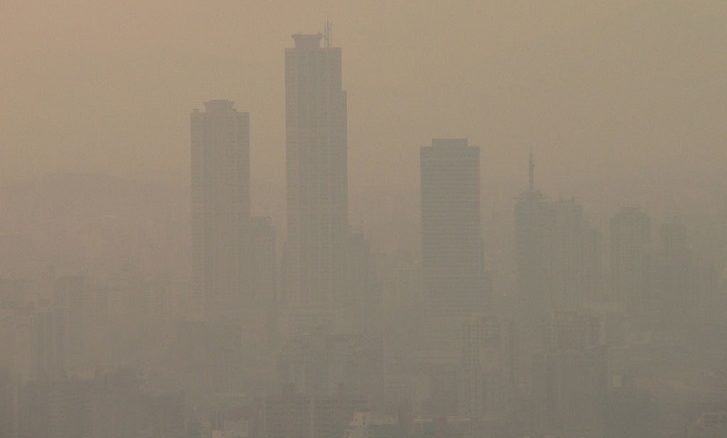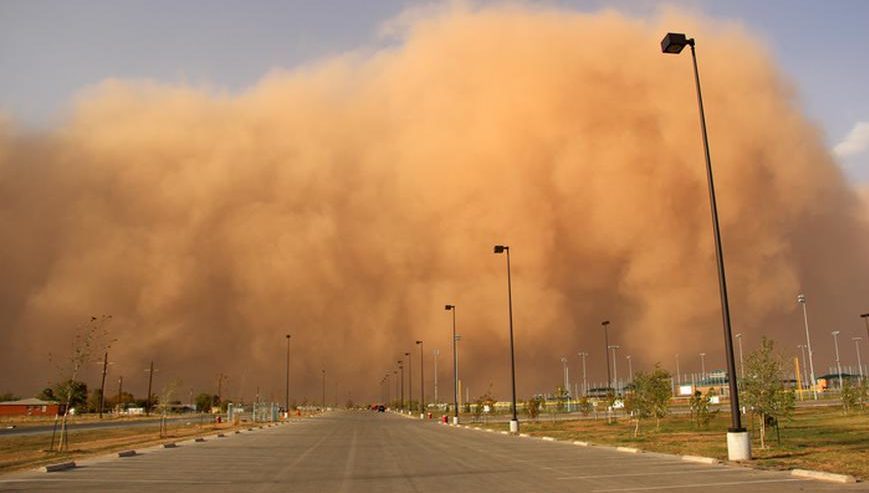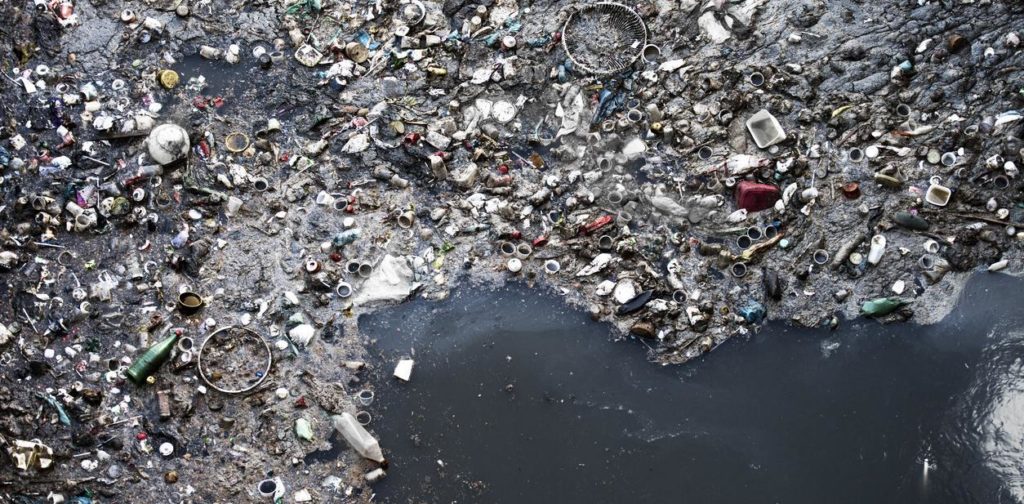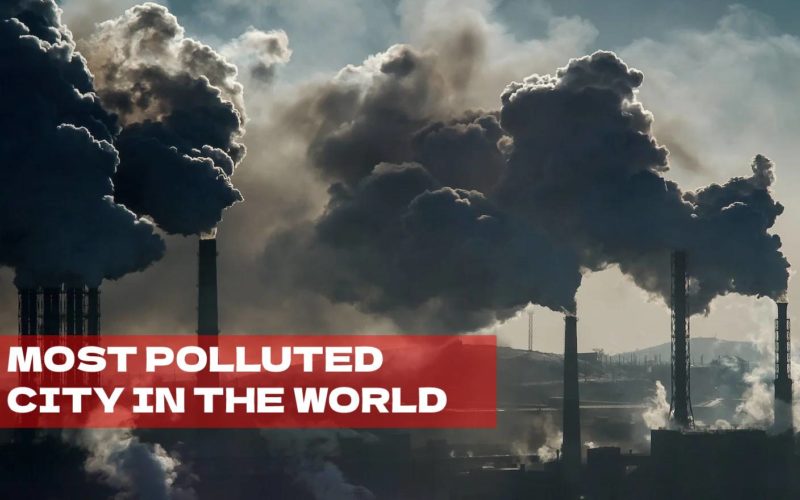Nobody likes pollution in their city, and to some degree, everyone complains about it. Smog, trash, all of the above make life miserable. But if you think your city has issues, those are extremely minor problems compared to the cities on this list. Here are the 10 most polluted cities in the world.
Table of Contents
ToggleMost polluted cities in the world
10. Onitsha, Nigeria
Onitsha is a port city in Nigeria with over one million citizens. In 2016, the city had the world’s highest recording of pollutant particles called PM10. This is particulate matter that is 10 microns per measurement. Being the biggest port on the Niger River, Onitsha is often plagued by clouds of diesel smoke from transport ships that pollute the air, along with emissions from old cars, which are abundant in the city, and heaps of trash being burned outdoors. But wait, if the air doesn’t convince you to be wary of this place, the water contamination might.

Tests of the city’s water found pollution from, garbage dumps, industrial waste, sewage, hospital waste, metal industry wastes, and fuel spills. The water has gained unhealthy levels of arsenic, mercury, and lead, as well as lots of other metals.
9. Gwalior, India
Gwalior is a major city in India, with a population of over 1.9 million. According to the World Health Organization, it’s the most pollute city in the country. The air quality in the city contains 176 micrograms of ultra-fine PM2.5 particles per cubic meter, which is horrible when you consider the WHO’s recommended value is 10 micrograms. The pollution mostly comes from the widespread use of outdated diesel-fueled motor vehicles, as well as the use of coal for heating in large buildings and fueling their power plants.

Other environmental factors, like roads in disrepair and hotter temperatures, create dust in the air. While a lack of vegetation leads to less clean air being recycled back. The terrible air quality has contributed to the rise in lung problems, like asthma and chronic obstructive pulmonary disease.
8. Mailuu-suu, Kyrgyzstan
Mailuu-suu, Kyrgyzstan was the site of a uranium plant that operated from 1946 until 1968, processing 10,000 metric tons of uranium for atomic bombs. But while it wasn’t all used for world-ending explosives, that radioactive material is still stored in unstable locations. These locations are threatened by earthquakes and landslides. These sites have already caused contamination disasters.

In April of 2005, a landslide introduced 300,000 cubic meters of mining waste into their river. If the rest of the material falls into rivers or is swallowed by landslides, it could devastate the lush and populous areas around it. The cancer rates in Mailuu-Suu are double that of the rest of the country. And while Kyrgyzstan has made attempts to secure the waste, the danger of more environmental catastrophe persists.
7. La Oroya, Peru
La Oroya is a city of 24,000 people, with a large mining and processing industry that causes toxic chemicals to enter the air, vegetation to wither and die, and sickness in the population. An astonishing, 99% of children living there have high levels of lead in their blood, and deaths linked to toxic gases. Furthermore, lung diseases are a regular issue for the workers and residents. A large amount of this pollution comes from an American-owned smelting plant near the population center that releases chemicals into the air.

Extremely high sulfur dioxide content in the air from these plants causes acid rain, which has killed most of the local plant life. Toxic lead waste emitted from the industrial processing plants will stay in the city’s soil for hundreds of years. This means revitalization will be nearly impossible for this Peruvian wasteland. This place makes the smog in LA feel like a fresh ocean breeze.
6. Xingtai, China
Xingtai is the city with the worst air pollution in China. Thick smog often blankets the area, and the air tastes faintly of petrol, even on a clear day. Xingtai is home to over 7,100,000 people and is a heavily industrialized city, producing an astounding 20 million metric tons of coal each year, and housing the region’s biggest coal-fueled power plant.

Yeah, but the problems don’t end there, as several plants have been under criminal investigation for leaking toxic waste and harmful chemicals into their water and soil. Some days, the city’s residents are forced to stay indoors, cranking air purifiers and monitoring their air quality by phone app. Children have to wear masks at school. Moreover, they are discouraged from outdoor activities to avoid contracting tuberculosis.
5. Chernobyl, Ukraine
On April 26th, 1986, Chernobyl became the site of the worst nuclear disaster ever when a nuclear power plant experienced a meltdown and irradiated more than 2,590 square kilometers. Despite the highly radioactive environment, around 700 people still live in and around the outskirts of the inclusion zone, which was evacuated by the government to avoid radiation-related deaths. Workers and researchers still spend their days decommissioning the plant and studying the effects of the fallout.

Citizens in the area still experience the effect of Chernobyl’s radioactivity, with cancer rates skyrocketing and birth defects, skin damage, and respiratory issues being commonplace. Chernobyl won’t be safe for another 20,000 years, but the natives, administrative workers, and mutated wildlife still call it home.
4. Linfen, China
Linfen has undergone decades of air pollution from the booming coal industry in the area. The sky there is commonly obscured by gray, ashy smog, that is largely created by the numerous coal mining operations and coal-burning power plants. The coal ash pollution is so bad that hanging your laundry out to dry can cause it to turn black.

A member of Linfen’s 4,300,000-person population has a life expectancy of 10 years younger than China‘s national average, which is 76. In terms of geology, Linfen is in a bad spot to deal with its situation, lying in a basin surrounded by mountains, where airflow is stifled. This results in toxic air pollution not disappearing naturally. If China wants blue skies across their countryside, they’ll have to lay off the coal.
3. Zabol, Iran
Zabol is home to over 130,600 people, all of whom happen to live in one of the most polluted cities in the whole world. Zabol’s pollution problem may not be what you expect, though. In 2016, the World Health Organization ranked Zabol as the most polluted city in the world, based on a measurement of fine particles in the air. The city’s air pollution is caused by their annual Wind of 120 Days. A massive dust storm caused by strong winds starts in late May and continues until late September. Think about that. That’s a dust storm that lasts an entire four months.

Every year, the storm gets worse because of the disappearance of the nearby wetland, which served to cool down the area but now adds more dust to the storm. Because of the harsh pollution, more than 500 residents are diagnosed with tuberculosis every year.
2. Delhi, India
In 2014, the World Health Organization named India‘s capital city, Delhi, the most polluted city in the world. This city’s 11 million inhabitants are affected by the dense smog of air pollutants so badly that 10,500 of them die every year from it. While countless others contract lung cancer and asthma. Health experts say that breathing the air in Delhi is like smoking 40 cigarettes a day.

Moreover, during particularly bad smog alerts, the government will shut down construction projects, power plants, and schools for a matter of days, to curb some of the pollutant’s effects. Those pollutants come from the high concentration of vehicles in this city. Additionally, emissions from industrial sectors, construction, and crop burning smoke contribute to pollution. There’s no end in sight, or way to tell when Delhi’s air will become safe to breathe again.
1. Dzershinsk, Russia
Dzershinsk is a city with over 240,000 people, that has been named by the Guinness Book of World Records as the most chemically polluted city on Earth. The chemical pollution can be attributed to the manufacturing of chemical weapons during the Cold War. Things like sarin, VX, and mustard gas were produced in the city. And other chemicals, like acetone and methylamine, are still in production.

Between 1930 and 1998, over 272,000 metric tons of dangerous toxins and chemicals were illegally dumped in the city, contaminating the water and soil with enough toxins to send the population death rate 260% higher than the birth rate in 2003. To put it into perspective, the average male citizen of Dzershinsk has a life expectancy of just 42 years, and women, 47.
So wherever you live, if it’s not on this list, be thankful. I hope you learned from this article about the most polluted cities in the world. For more articles, visit our website.
Note: Must read Global Facts About Poverty


Hi, just required you to know I he added your site to my Google bookmarks due to your layout. But seriously, I believe your internet site has 1 in the freshest theme I??ve came across. It extremely helps make reading your blog significantly easier.